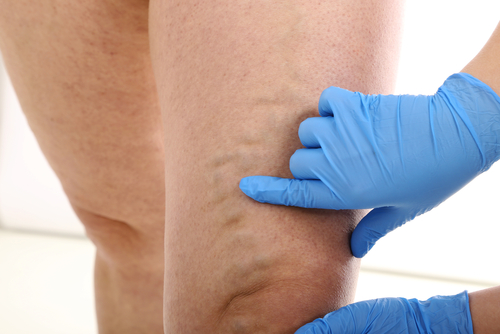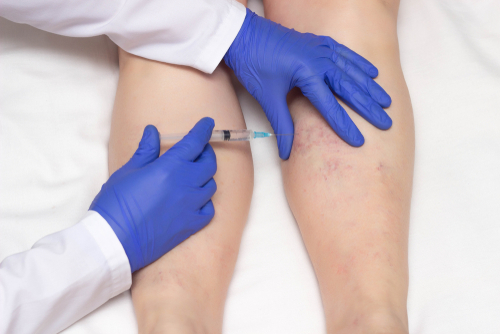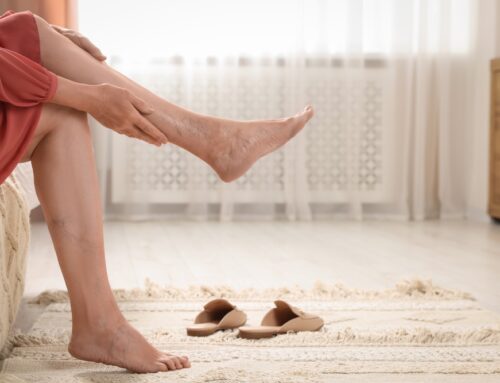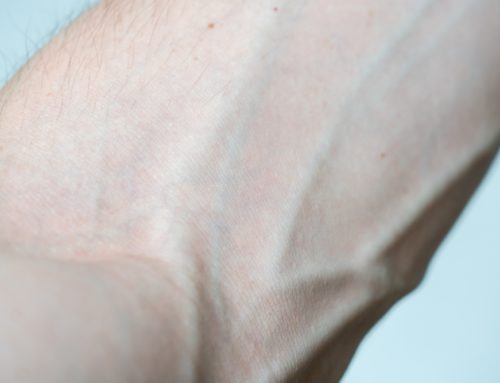Vein conditions are one of the most common categories of medical conditions. According to the National Blood Clot Alliance, “the chances of developing DVT are about 1 in 1000 per year”.
Although many vein conditions such as varicose and spider veins are cosmetic, some are more dangerous. For example, when it comes to deep vein thrombosis, a swift diagnosis is better.
To help with diagnosing, vein specialists use a variety of techniques. Today we’ll talk about venous ultrasounds.
Venous Ultrasound
Venous ultrasounds are one of the most common procedures performed by vein specialists. It’s a great way for your doctor to get a look at your veins and see if there are any irregularities.
The procedure is completely non-invasive and relatively straightforward.
Surgeons can use a venous duplex scan for varicose veins, leg veins, DVT, blood clots in the legs, and other venous conditions.
What Happens During a Vein Ultrasound?
During a venous ultrasound appointment, a vein specialist runs a handheld device over the top of your skin in the area of concern. The device uses sound waves to create images of your veins or blood flow.
The images then help your doctor diagnose the issue that’s causing you discomfort. Your doctor may look for things such as blood clots, closed veins, blockages, as well as irregularities with your blood circulation.
Since the procedure is non-invasive, there is typically no downtime and very little prep. Aside from wearing comfortable clothes and taking off any jewelry or metals–there isn’t much that’s asked of the patient prior to the procedure.
What Kind of Vein Ultrasounds Are There?
In terms of venous ultrasounds, there are a few different kinds. Let’s look at a couple of the most common types.
Traditional Ultrasound
Generally speaking, a traditional venous ultrasound bounces sound waves off of blood vessels to create images. It cannot, however, create images of blood flow.
Venous Doppler Ultrasound
A Doppler ultrasound, on the other hand, can bounce sound waves off of moving blood as well. As a result, a Doppler ultrasound allows you to see blood flow and irregularities with your circulation. Most often, specialists use a venous doppler to rule out DVT (deep vein thrombosis). Additionally, venous doppler tests for blood clots are usually performed regularly and are highly accurate.
Venous Duplex Ultrasound
Put simply, a duplex ultrasound combines traditional venous ultrasound and a doppler ultrasound. The result is a multi-pronged diagnostic procedure that can not only detect blood flow but generate images of the surrounding tissue as well.
Benefits Of A Venous Ultrasound
As mentioned earlier, venous ultrasounds are straightforward and incredibly useful for diagnosing various vein conditions. Early diagnosis is particularly important when it comes to more serious conditions such as deep vein thrombosis (DVT). Keep in mind that blood clots can dislodge and travel through your bloodstream to other parts of the body, causing havoc to your health.
As mentioned earlier, venous ultrasounds are also completely non-invasive, which often makes them the preferred choice as far as diagnostic procedures go. Other procedures such as venographies are a little more invasive and are therefore less common.
Ultrasound Of Leg Veins

Although a venous ultrasound can be used in a variety of different locations, one of its main uses is to look at leg veins. Discomfort, achiness, protruding veins, and other leg concerns can often be diagnosed with an ultrasound of the leg.
Venous Conditions
Blood clots, chronic venous insufficiency, varicose veins, and deep vein thrombosis are all conditions that can be diagnosed with a venous ultrasound.
Continue reading to learn more about common venous conditions and the effects that they can have on your health.
Venous Insufficiency
Chronic venous insufficiency (otherwise known as CVI) is a condition that occurs when veins in your legs don’t push blood back up to your heart. As a result, the blood pools and can result in uncomfortable symptoms.
Common symptoms of this condition include:
- Pain or discomfort.
- Swelling in the legs.
- Ulcers.
- Changes in skin texture.
Venous insufficiency can often be treated with medications that help increase blood flow. Minimally invasive procedures such as sclerotherapy may be used as well.
In addition to medication and medical procedures, however, lifestyle changes may also help. Your vein specialist might recommend wearing compression stockings, elevating your legs, and exercising regularly.
Varicose Veins
Varicose veins are a commonly occurring condition during which blood pools in your veins.
Common symptoms of this condition may be:
- Swollen, raised, or twisted veins.
- Purplish or bluish veins.
- A heavy or achy feeling in the area containing the varicose veins.
There are various great treatment options when it comes to varicose veins. Here are a few.
Sclerotherapy – During this procedure, a doctor injects a solution into the affected veins. The vein then seals up and is slowly reabsorbed back into your body over time. Meanwhile, the blood can find a different, healthy vein to reroute through.
Laser – Similar to sclerotherapy, laser treatments also work by damaging the unhealthy vein. The laser forces the damaged vein to seal up and likewise be reabsorbed back into the body.
Spider Veins
Spider veins are similar to varicose veins but on a smaller scale. Instead of large twisted veins, spider veins are typically small and web-like. They can frequently be seen just under the skin and may be bluish or purplish. They are generally considered a purely cosmetic concern.
Blood Clots
A blood clot is basically a mass of blood that clumps together. Clots frequently form in order to seal up an injury and prevent further bleeding. Occasionally, however, a clot forms somewhere it shouldn’t. In this case, the blood clot may actually be a hazard to your health.
Deep Vein Thrombosis (DVT)
Deep vein thrombosis is a condition during which a blood clot forms in one of your deep veins. Oftentimes, these occur in the legs and can be diagnosed with a venous ultrasound.
Common symptoms of DVT include:
- Red or otherwise discolored legs.
- Pain or discomfort in the leg area.
- Swelling in one or both legs.
- Tenderness.
This condition is commonly treated with medications such as blood thinners and compression stockings. Don’t worry quite yet if you’re diagnosed with DVT. Our vein specialists here at VeinSolutions™ will be able to recommend a course of treatments to you. Simply call or visit our website to book your appointment.
Last Notes
If you find yourself experiencing any discomfort or other abnormalities in your legs, don’t forget to get it checked out as soon as possible. Keep in mind that some conditions such as dislodged blood clots can have a serious impact on your health and need to be checked out as soon as possible.
Also, don’t forget that some of these venous conditions may be considered a risk to your physical health, and may therefore be eligible to be covered by insurance. Call your insurance company and verify. A diagnosis from a vein specialist stating that your condition is a physical risk to you may also help.
VeinSolutions™ at Michigan Vascular Center

Don’t hesitate to make an appointment with us here at VeinSolutions™. We can perform a FREE vein screening and get you started on the path to treatment.
We offer a variety of treatments, including venous ablation, microphlebectomy, and sclerotherapy. Additionally, we also provide venous ultrasounds, which are a great way to diagnose vein conditions. Don’t hesitate to call or visit our website if you’re experiencing any vein-related discomfort.
Our team of experienced doctors, technicians, and nurses is more than up to the challenge of helping you feel back to normal. Moreover, we offer great medical care and a shoulder to lean on. We strive to treat each patient like they’re family and do everything we can to make your visits as comfortable as possible.
Part of our commitment to our patients is doing all that we can to keep them safe. That’s why we follow all Covid-19 guidelines, including regular hand washing and office cleaning.
So don’t wait; make an appointment with us today! Healthy veins mean a healthier and happier you. Don’t let your condition keep you from the things you love. Healthier veins mean more freedom to be active and do things with your family, as well as relief from discomfort. Call today, our team here at VeinSolutions™ can’t wait to meet you.
Request A Consultation
Give Us A Call:
(810) 232-3363
Give Us A Call:
(810) 232-3363


